Rice is an essential staple food for most population on the world every day. it has a very wide acreage in the world. In addition to edible, rice can also be used as a raw material for wine making ,and as industrial raw materials in sugar making, rice husks and rice stalks can feed to poultry. High-quality rice has the high demand on the market. In some areas of many countries, almost every household planting paddy rice. In general, it will take about 4~5 months from the planting to the growing season of harvesting, how to plant high-quality and high-yield rice during the growing period?
1.Choice the best variety suits your growing condition
The most suitable variety is the one best meeting farmer’s and consumer’s needs. It may not always give the highest yield and will be influenced by soil type, and field elevation, weather and some other reason.
When selecting a variety check the following:
Crop duration • Long-duration varieties (160 days and longer) suitable for irrigated areas or flood-prone areas • Medium-duration varieties (120–140 days) suitable for both rainfed and irrigated areas • Short-duration varieties (less than 120 days) suitable for drought-prone areas or for double cropping.
Crop height • Tall varieties (1.4 m and taller) are suitable for flood-prone and unleveled fields, lodging may be a problem. • Medium height varieties (1–1.2 m) are suitable for most areas and are not as susceptible to lodging when fertilizer is used. • Short varieties are best suited to level fields especially in irrigated areas.
They are responsive to fertilizers and are normally less than 1 m in height. Varieties should be selected based on good yield potential, resistance to disease, good eating qualities, high milling yield, and are suitable for the market.White rice quality and flavor are importand in the market. often paid for aromatic varieties, but yields are normally lower. cooked rice is soft and sweet taste is more popular in market.
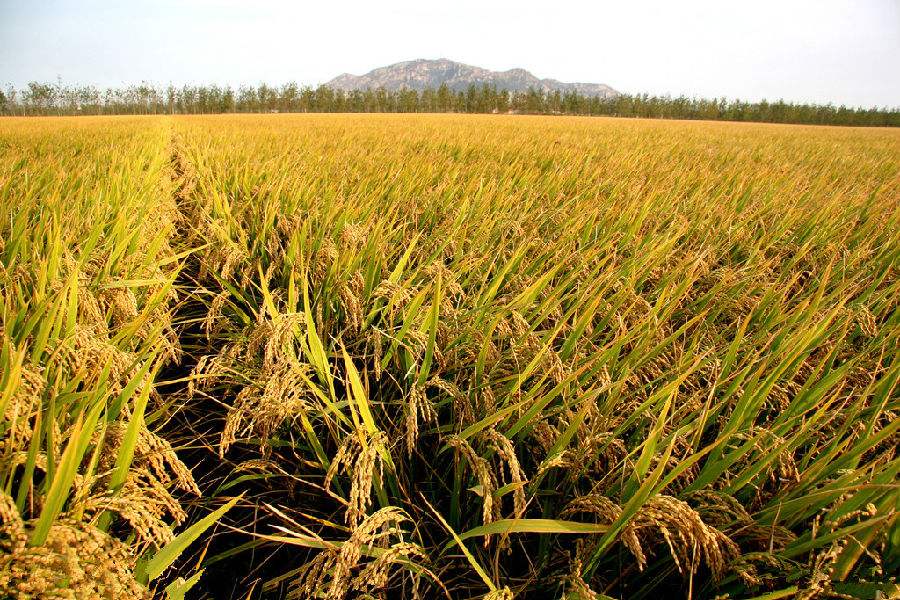
2.Use the best quality seed
Good seed is:
- Clean with no stones, soil, or weed seed;
- Pure containing grains of one variety
- Healthy having full big grains of the same color with no cracks or spotting.
High-quality seed can be bought as certified seed or produced by the farmer. High-quality seed reduces the required seeding rate and produces strong, healthy seedlings, resulting in a more uniform crop with higher yields.After harvesting of last year ,the farmer should prepare paddy seed .
how to choice good quality paddy seed ?
- Select a level field with well-maintained bunds and easy access. 2. Use clean, pure, and healthy seed. 3. Do a float test on the seed before planting and remove any seeds that float. 4. Use good management practices by planting on time, applying fertilizer, weeding before 21 days after establishment, and not letting weeds go to seed. 5. Rogue the fields by removing all rice plants that clearly look different during the vegetative, flowering, and grain-filling stages. 6. Harvest at full maturity when 80–85% of the grains are straw-colored or at 21–22% moisture. 7. Thresh and dry quickly after harvest. 8. Store seed safely and label containers or bags with variety name and date of harvest.
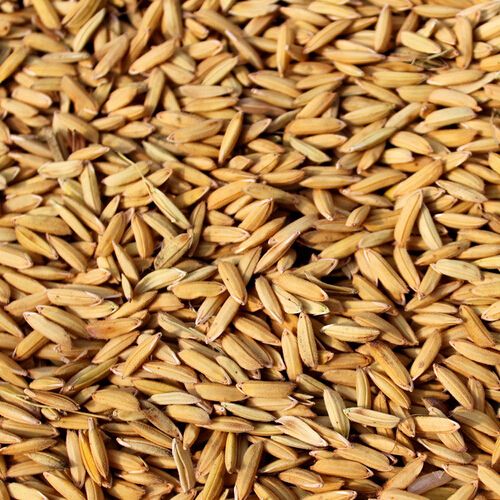
3.Clean up the fields and well prepared before planting
The farmer should plow immediately after the previous harvest — especially if the soil is still moist.
First or primary plowing. Use a disc or moldboard plow to kill weeds and incorporate crop residue, preferably 6–8 weeks before planting with maximum depth of 10 cm.
Second plowing. Plow across the field with the disc or tine harrow at least twice to make small clod sizes. Second plowing should be 2–3 weeks before planting and the last harrowing 1 week before planting with maximum depth of 5–7.5 cm. Repair bunds, destroy rat burrows, repair any holes and cracks, and recompact the bunds. Bunds should be at least 0.5 m high and 1 m wide.
A well-prepared and leveled field gives a uniform, healthy crop that can compete with weeds, use less water, and give higher yields at a lower cost. A well-prepared field has: Many small soil clods to give good seed-soil contact — clod size and seed size are similar; No weeds; Harder plowlayer at 10 cm to stop water penetration;Level and smooth surface after working; and Well-constructed bunds.Leveling the field will give better water coverage, better crop establishment, and better weed control. Soil puddling should be done at least 1–2 days before seeding to allow the water to clear when direct seeding.
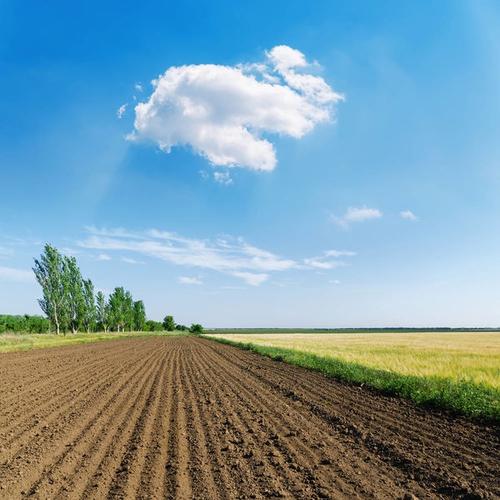
4.Plant on time
Planting the crop on time will help produce a fast-growing, uniform crop that will have higher yields and will be better able to compete with weeds and pests. The best time to plant depends on the locality, variety, water availability, and the best harvest time. Rice can either be transplanted from a nursery or direct-seeded in the field. Transplanted crops will normally take less time in the production field but 10–15 days longer for the total crop duration. In both cases, a well prepared seedbed is needed.
In field For direct seeding:
- Prepare the field by plowing at least twice and harrowing once-compare seed size and clod size.
- Level the soil surface.
- Apply and incorporate basal fertilizer before the last plowing or at 10 days after establishment.
Wet direct seeding:
- Pre-germination of seed. Soak the seed for 24 hours and then drain for 24 hours in the shade before broadcasting evenly over the water-covered soil surface.
- Broadcast pre-germinated seed at 100 kg/ha
- Allow surface water to drain or percolate naturally into soil
- Keep soil surface moist by adding water
- Add permanent water at 10–15 days after establishment or at 2–3- leaf stage.
- Apply basal fertilizer after permanent water is added.
Dry direct seeding
- Hand broadcast dry seed at 100 kg/ha or machine drill seed at 80 kg/ha and 20 mm depth
- Apply basal fertilizer through the seed drill
- Cover broadcast seed and fertilizer with a light harrowing
- Flash flood until 15 days after emergence or 2-leaf stage then add permanent water.
For transplanted crops
- Select a nursery site that is 1/10 in size of the intended planting area.
- Prepare the nursery by plowing at least twice and harrow at least once.
- Level the soil surface and put in drainage lines across the field.
- Pre-germination and sowing. Soak the seed for 24 hours and then drain for 24 hours in the shade. Broadcast seed in the nursery evenly, over the watercovered soil surface.
- Apply seed: 30–40 kg seed/ha transplanted area.
- Apply both chemical and organic fertilizer in the field before the last plowing.
- Transplanting age: short-medium duration varieties need 20-30 days and long-duration varieties need 20-40 days in nursery after seeding.
- Transplant in lines into puddled and water-covered fields.
- Maintain water coverage
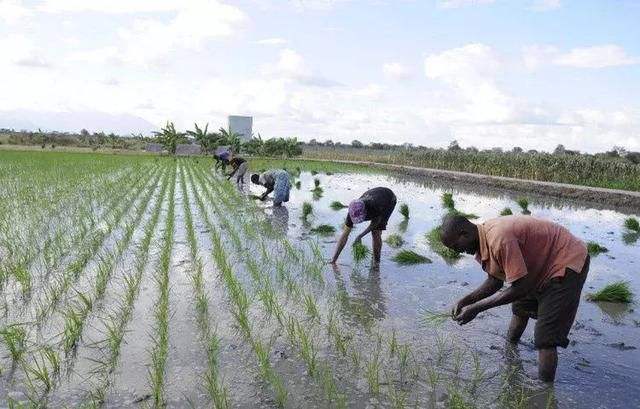
5.Weed early
Weeds compete directly with the rice plants and reduce rice yield. Each 1 kg dry matter of weeds is equivalent to 1 kg grain loss. Weeds cause most yield loss within the first 20–50 days after crop establishment. Weeding after panicle initiation may also be important to prevent weeds shedding seeds in future crops.
Effective weed management
- Plowing and harrowing in fallow should be undertaken at least 10–14 days apart or after rain.
- Good land leveling reduces weed growth because most weeds have trouble germinating under water.
- Select varieties which have early vigor.
- Use clean rice seed which is free of weed seeds.
- Apply permanent water early — weeds cannot germinate under water.
- First weeding begins within 2–3 weeks after establishment and the second in another 2–3 weeks. Weed before fertilizer application.
- Using herbicides. Identify the weed correctly and use the appropriate herbicide as recommended on the label. • Spray when the weeds are small.
- Apply pre-emergence herbicides after planting prior to establishment.
- Apply post-emergence herbicides after emergence being careful of crop damage.
- Herbicides are poisonous; if they are not used properly they can cause health and environment problems. Label them clearly and keep them out of children’s reach. • Always use protective clothing when spraying.
- Do not wear raincoats when spraying as this increases sweating.
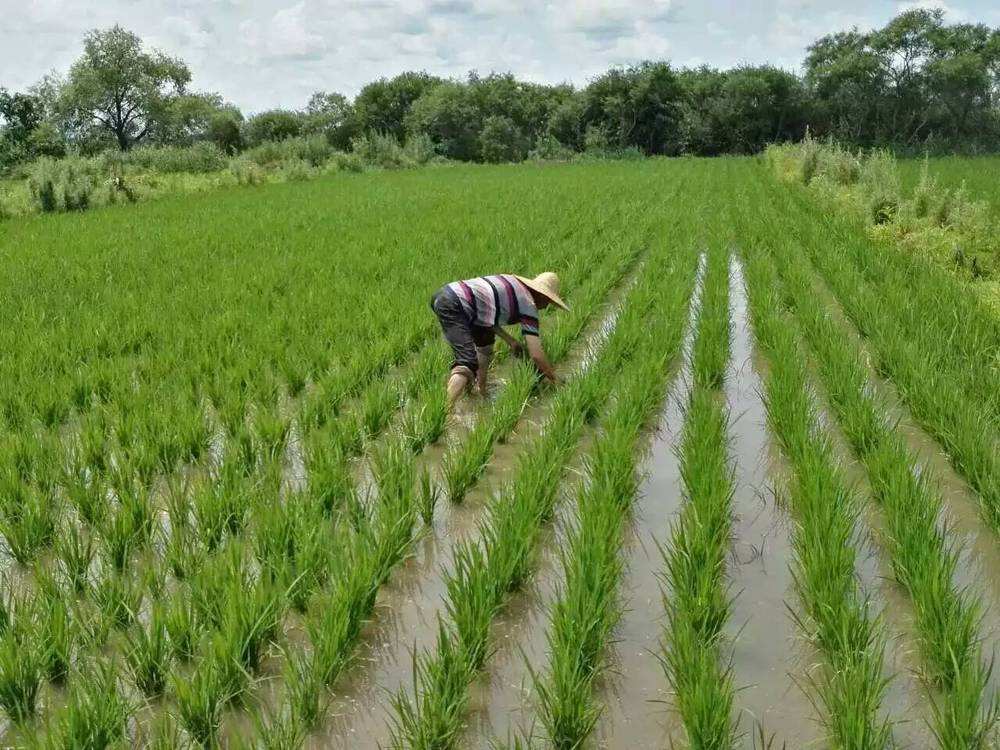
6.Fertilizer timely
Most soils provide only limited amount of nutrients to the crop, therefore fertilizers need to be applied to increase grain yield. In some cases, fertilizers are also added to improve the soil’s physical condition. The amount and type of fertilizer applied are determined on the assumption that 1 ton of grain will remove 15 kg nitrogen (N), 2–3 kg phosphorus (P), and 15–20 kg potassium (K). These base rates need to be modified according to the soil type, the season, the crop condition, prevailing weather conditions, and efficiency of application. For efficient fertilizer use:
- Use organic fertilizer (manure, compost, straw, husk, plant leaves) whenever possible, especially in nurseries.
- Apply fertilizer according to soil type and expected yield. As a guide, a 2 t/ha yield on clay loam soil will require 20 kg N and 5 kg P. Sandy soils may require another 10–15 kg K. Double these recommendations for a 3 t/ha expected yield.
- Apply all P, K, and 10% N evenly and incorporate just before seeding or transplanting. For direct seeded broadcast crops, it is okay to apply 10–14 days after establishment when there is water in the field.
- Apply remaining N (urea) in 2 equal portions at 30 days and 50–60 days (panicle initiation) after emergence. • In established crops, apply chemical fertilizer only in standing water and evenly across the whole field.
- Do not apply high rates of fertilizer for traditional varieties as they may have limited response and cause lodging.
- Do not use chemical fertilizer if you need more than 5 kg paddy to pay for 1 kg of fertilizer. • Inorganic fertilizers must be stored in a dry and cool place that is out of children’s reach.
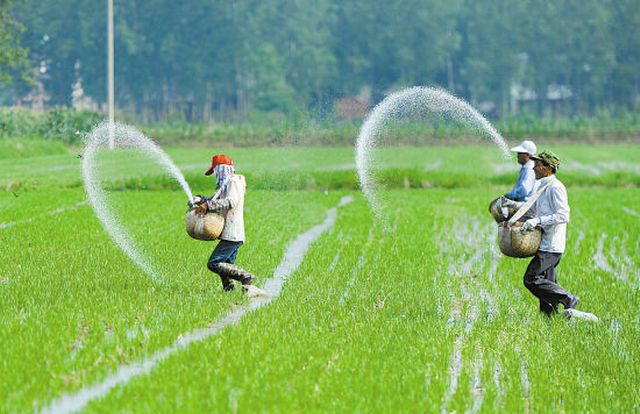
7.Efficient pests and diseases control
Farmers lose an estimated average of 37% of their rice crop to pests and diseases every year. In addition to good crop management, timely and accurate diagnosis can significantly reduce losses. The best control for pests and disease problems is prevention. To limit pest and disease incidences in a rice crop, the following recommendations can be followed:
- Practice good cleaning of equipment.
- Clean the field between seasons by managing stubbles and ratoons, and by maintaining & repairing bunds.
- Use clean seeds and resistant varieties. • Certified seed is recommended. If certified seed is not available, use clean seed having no discolored seeds, weed seeds or other rice varieties mixed in. • Use short-duration and resistant cultivars to decrease insect pest populations.
- Plant at the same time as your neighbors (or within a 2 week window) to minimize insect, disease, bird, and rat pressure on individual fields.
- Do not over apply fertilizer. Following specific fertilizer recommendations is important because high nitrogen can increase susceptibility to certain pests and diseases.
- Encourage natural pest enemies. • Overuse of pesticide is common among farmers and can actually lead to pest outbreaks. • Natural enemies of rice pests are killed when pesticides are applied which can lead to a pest outbreak.
- Do not apply pesticide within 40 days of planting. • Rice crops can recover from early damage without affecting yield. • Get appropriate information on specific diseases that require early management. If there are pest or disease incidences in the crop, it is important to diagnose the problem accurately. For help with the diagnosis, seek advice from a professional.
- When deciding to use a chemical for pest and disease control, it is important to: • Use well-maintained spray equipment that has been properly calibrated; • Apply the dosage recommended by the manufacturer; and • Follow the safety precautions for mixing and spray applications.
8.Harvest on time
Harvesting the crop on time is very important to maximize yields and grain quality. Crops harvested too early will have many unfilled and immature grains.Immature grains break easily when milled and can’t sold on market. If crops are harvested late, heavy losses will occur through shattering and bird attacks. Quality will also decrease due to grain weathering, resulting in breakage and downgrading due to undesirable grain color. Crops should be harvested when:
- Grain moisture is between 20–22%, which is normally about 30 days after flowering;
- 80–85% of the grains are strawcolored;
- Grains in the lower part of the panicle are hard, not soft; and
- Grains are firm but not easily broken when squeezed between the teeth.
After cutting, maximize grain quality by:
- Ensuring the panicles do not touch the ground or lay in water;
- Minimizing the time the cut panicles remain in large bundles in the field — thresh within 24 hours of cutting;
- Drying the grains as soon as possible after threshing;
- Turning or stirring the grains at least once every hour when sun drying to achieve uniform drying;
- Sun drying on tarpaulins or clean drying pads;
- Keeping the thickness of the grain layer at 3–5 cm;
- Covering the grain on hot days during mid-day to prevent over-heating, and covering immediately if it starts raining;
- Cleaning the grain by repeated winnowing after drying; and Storing the rice in a cool, dry, and clean area — preferably in sealed containers for seed.
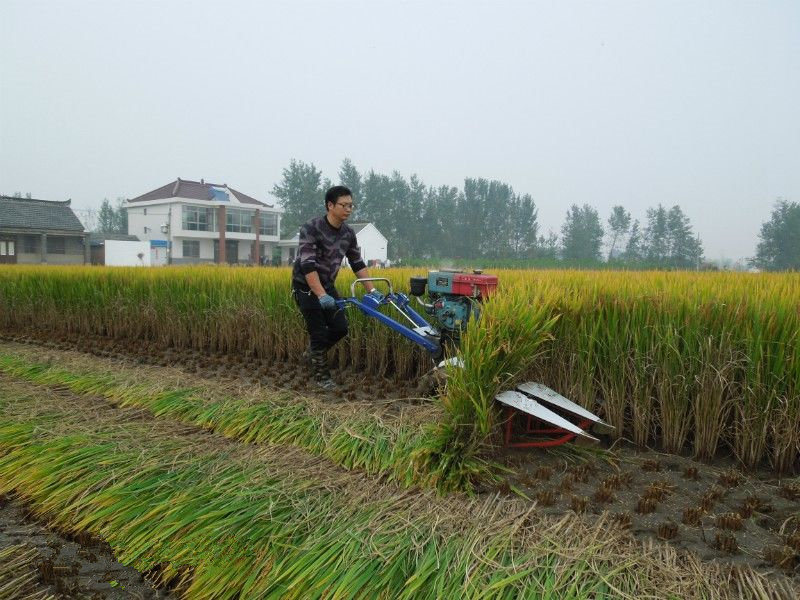
In the rice growing period ,farmer need plant paddy scientific.it is necessary to select varieties with strong disease resistance according to the actual conditions of the area, and to ensure the rationality of breeding and strong seedling work according to a certain sowing time. At the same time, the seedlings, fertilization and irrigation should be done well according to the actual growth which can ensure the increase of rice yield and quality.
